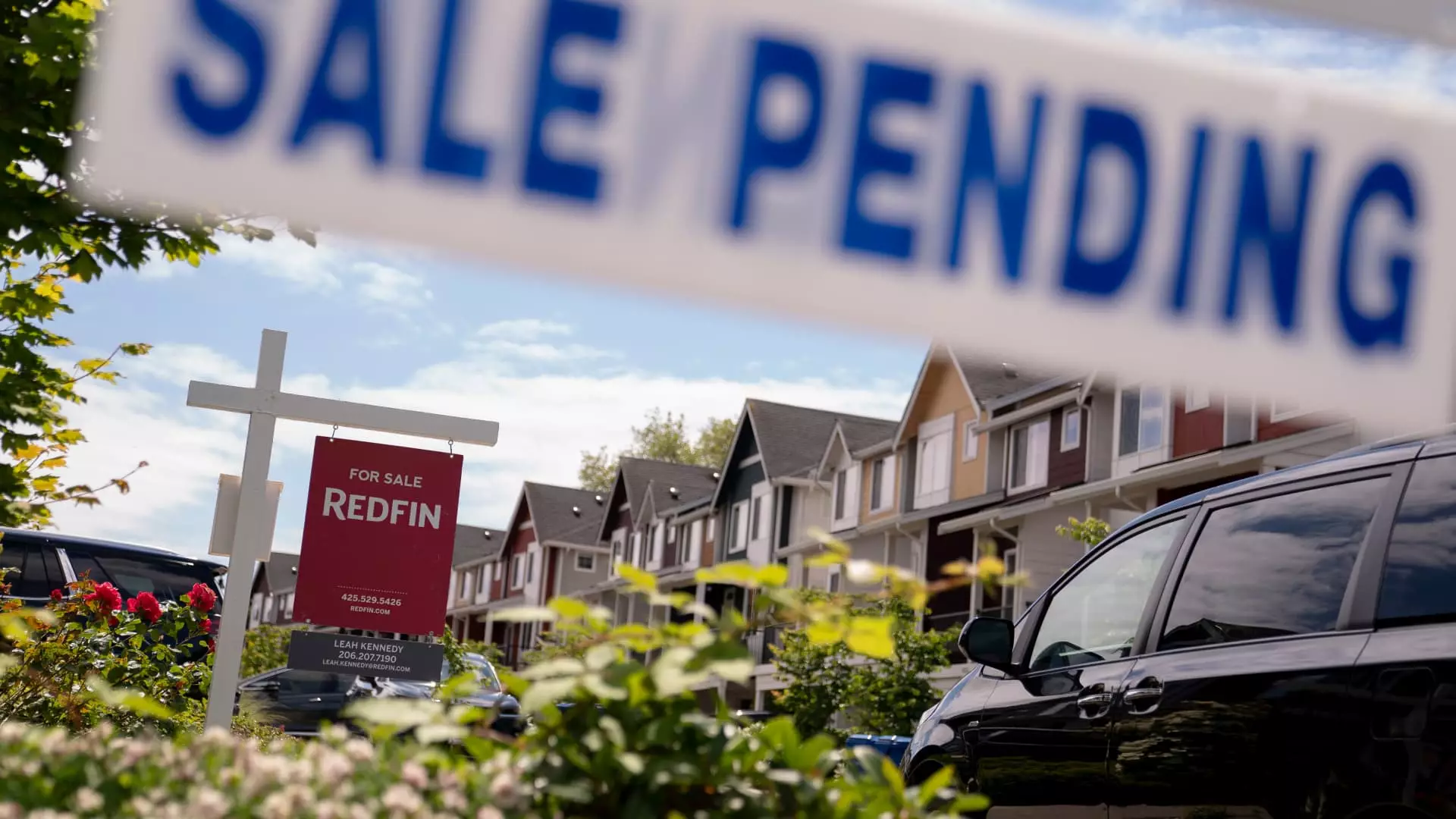In the ever-fluctuating world of real estate, the winds of change have howled once more as mortgage rates soared to heights unseen since February 2023, reaching a daunting 6.81%. This spike has sent shockwaves through the housing market, and understandably so. A staggering 8.5% drop in total mortgage application volume, as reported by the Mortgage Bankers Association (MBA), underscores the fear that has gripped potential homebuyers. With housing affordability eroding and economic volatility looming, it’s a landscape fraught with peril for those looking to secure a home.
Recent statistics reveal a mixed bag; while mortgage applications for home purchases saw a 5% decline compared to the previous week, they still represent a 13% increase from the same period last year. It’s a smokescreen of growth masking an underlying fragility—the number of homes available for sale has swelled by 30% year-over-year. This surge in inventory, combined with rising interest rates, marks a critical juncture in the real estate narrative. It raises questions about whether the demand we are witnessing can hold up under such strain.
The Shift Towards Riskier Loans
The higher rates have prompted homebuyers to explore riskier loans—namely adjustable-rate mortgages (ARMs)—in pursuit of lower initial payments. The appeal of these loans is undeniable, especially with the average initial fixed rate approximating 6%. Yet this move reflects a desperate gamble rather than a sound strategy for financially savvy consumers. Borrowers who rush to seize what seems like a bargain may find themselves in an untenable position as the rates inevitably adjust, leading to substantially higher payments down the line.
The alarming trend of opting for ARMs has shifted the landscape of the mortgage application pool, with reports indicating that the ARM share surged to 9.6%. This figure, the highest observed since November 2023, highlights a growing willingness among borrowers to embrace short-term savings despite long-term risks. These decisions are not merely a reflection of market conditions; they echo a broader sentiment of anxiety and uncertainty coursing through the American populace.
The Psychological Impact of Economic Uncertainty
Economic uncertainty can have a paralyzing effect on consumer behavior, and it is evident that many potential buyers are hesitating to plunge into homeownership amidst this climate. Mike Fratantoni, senior vice president and chief economist at the MBA, encapsulates this sentiment: “Economic uncertainty and the volatility in rates is likely to make at least some prospective buyers more hesitant to move forward with a purchase.” Such caution among consumers could stall what should be a burgeoning housing market and, in turn, impact the broader economy.
Although home prices are currently higher than they were last year—a factor that undeniably adds to the financial burden—borrowers remain fixated on the potential for lower monthly payments. Yet, this myopic focus on immediate savings overlooks the long-term implications of committing to adjustable rates. By prioritizing short-term affordability over financial stability, homebuyers may unwittingly set themselves up for a future of unpredictability and financial strain.
A Sliver of Hope Amidst the Chaos
Interestingly, there is a glimmer of hope amidst the turmoil; mortgage rates appear to have eased slightly at the start of the current week, creating a momentary calm in a sea of volatility. Such fluctuations can be misleading, however, as experts like Matthew Graham from Mortgage News Daily caution against complacency. This isn’t the time for buyers to let their guards down; the possibility of further rate adjustments looms, like a storm cloud on the horizon.
For those who have held off on buying due to these circumstances, the market could soon present unique opportunities. The surge in inventory fosters a competitive environment where buyers can negotiate better prices. However, they must proceed with caution and remain aware of the looming unpredictability of mortgage rates.
In this tumultuous climate, it is evident the American real estate market stands at a crossroads. Choices made today will reverberate into the future, affecting not just individual buyers but the economy at large. The landscape demands more than mere observation—it calls for careful consideration and strategic decision-making. Let us hope that prospective homebuyers approach these turbulent waters with wisdom rather than impulsiveness.


Leave a Reply